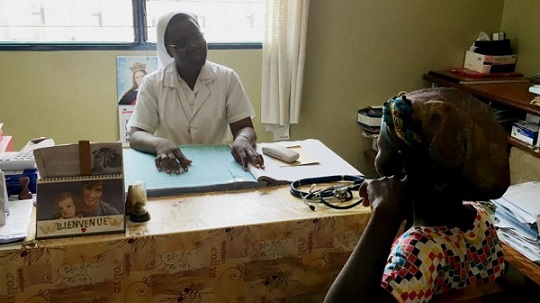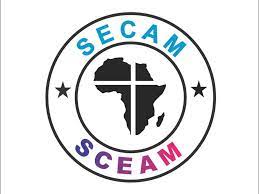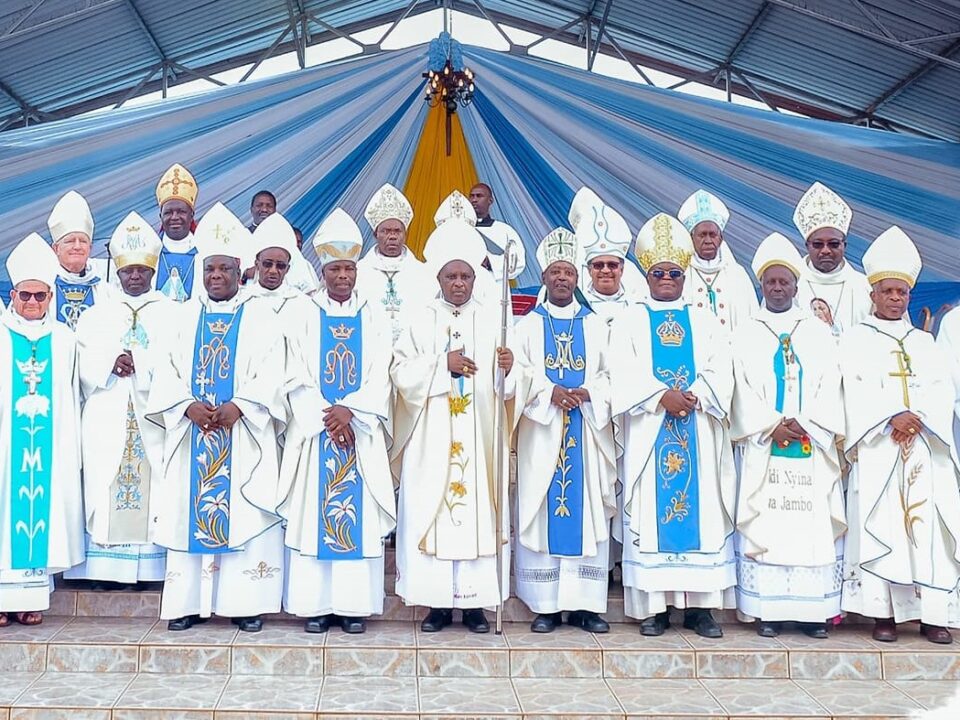- Contact us on - Contactez-nous sur - Contacte-nos em
- +233-30-277-8867/8
- +233-30-277-2548
- secam@secam.org
Seeing ‘Africa’ with New Eyes
Seeing ‘Africa’ with New Eyes
Global Sisters Report (GSR) || By Laura M. Leming || 23 July 2018
 For the last three years, the Center for Social Concern at the University of Dayton, Ohio, has dedicated a portion of its Lenten almsgiving campaign to a small health center run by the Marianist Sisters in Kpatchilé, Togo. In May, I was blessed to visit this center in this small village in the savannah of Western Africa — “now my eyes have seen” (Job 42:5).
For the last three years, the Center for Social Concern at the University of Dayton, Ohio, has dedicated a portion of its Lenten almsgiving campaign to a small health center run by the Marianist Sisters in Kpatchilé, Togo. In May, I was blessed to visit this center in this small village in the savannah of Western Africa — “now my eyes have seen” (Job 42:5).
Those words kept ringing in me during the week that six other faculty colleagues and I traveled through Togo as part of our Global Education Seminar. Three weeks in Ghana and Togo were the culminating experience of a yearlong seminar aimed at developing deeper global firsthand knowledge that our faculty can bring into our teaching and research.
For me as a Marianist Sister, visiting Togo fulfilled a lifelong dream. I have been hearing about the Marianist family’s presence in Western Africa since I was a postulant. Being able to visit in person was both exhilarating and humbling.
The center of our ministry in Kpatchilé is a health clinic and maternity ward that make medical and childbirth assistance available in a part of the world where it was previously not accessible. Sr. Anne-Martine Diwizie is a physician’s assistant and supervises the clinic, while other sisters do the clinic bookkeeping, run a girls’ hostel to facilitate female education, and assist in nursing and pastoral care in the clinic and at the local parish.
It should be noted that health care was not a founding element of our Marianist mission. But our founders’ insistence on Mary’s words at Cana, “Do whatever he tells you,” has led us here — in Togo and more recently also in Ranchi, India.
It’s not likely that we will build and staff many hospitals, but when access to simple health care is the most urgent need of the people with whom we find ourselves, it ends up sounding like what he — and Mary — are telling us to do, despite our seeming inadequacy.
Like many villages in Western Africa, the only electricity available is solar. It is striking to be in rural Africa and see a few solar-driven streetlights and cell-charging hubs. But the simplicity of the maternity ward and birthing room are stark reminders of the many inequities, especially in health care, between overdeveloped parts of the world and those where people fight for meager resources.
The nurse on duty showed us a “recovery room” with only six wood frame beds with 4-inch plastic-covered foam mattresses and mosquito nets. But this simple room provides more space and opportunity to rest and bond with their infants than women would otherwise have — as well as someone to watch for any postpartum complication.
On the day I visited with one of my other seminar colleagues, there was a vaccination clinic for young infants in the area. We were welcomed into the “round house,” a sturdy building whose structure closely resembled the circular thatched shelters that typify West African village life. We counted 29 mothers with infants seated on the benches lining the walls, some nursing and soothing their children after their weight check and shot, some chatting with others as their children slept in their arms.
As they left, they tied their infants on their backs in the manner of West African mothers. A common feature of all the Marianist chapels in the five Togolese cities we visited is an African Madonna, where young Jesus is reaching out from his mother’s back or hip. Such a common sight on African streets!
In talking with Sr. Agnès Konlani, the hostel coordinator, about what she thought we should take back to the University of Dayton about life in rural Africa, she insisted on the need for quality education, especially for girls. The annual fee of 7,000 Congolese francs (currently, approximately $11) for public schooling makes it prohibitive for families to send all their children to school.
As in other parts of the world, it’s the girl children who are most often left behind. And early marriage is still a problem. Quality education is what Agnès wants us to join the struggle for — in her mind, the most effective intervention for grinding poverty, and the best path to development. That’s why everywhere else we visited in Togo, the Marianists had a school of some sort, from elementary to college prep.
Focusing here on health and educational needs, however, doesn’t do justice to the wonderful capacities we saw in Ghana and Togo. We marveled at the strength and dignity of a people who had been ravaged by the slave trade; the depth of the wisdom of local peoples handed on through generations; the beauty and color of the clothing that make our wardrobes in the U.S. and Europe seem drab by comparison; and most especially the vision and hope of so many young Africans we met — both students and young professionals in education and development work. They aspire to a great future and we witnessed the energy and enthusiasm they are investing to make that a reality.
This year of growth in my familiarity with Ghana and Togo has opened my mind and heart in many ways. For instance, I don’t think I was ever conscious that there are 55 countries in the African Union. That’s more than one-quarter of the countries in the world!
And yet so often in the West, we simply condense their immensely diverse and rich cultures to “Africa.” It is something small that I will work on as I move forward. I can’t speak for people of African descent, but I can share what I’ve learned about the people and cultures of Ghana and Togo.
I happened to change my seat on the plane leaving Accra, Ghana, to get a window seat (still economy!) on my flight to France. On boarding, I was seated alongside a young man. In conversation, I learned he was Ashanti and Catholic and studied economics.
After working in finance for a few years, he decided to dedicate his energies to strategizing for nongovernmental organizations on how best to meet the U.N. sustainable development goals. He was reading the memoir of a government minister (also Ashanti) because, as he told me, he thinks it’s important for young people “to be inspired by the wisdom of our elders to stay strong in the work for the people.”
It was such good fortune — which really struck me as providence — to be able to converse with him. Kofi and I exchanged contact information, and I sincerely hope he may be able to visit the University of Dayton someday, to share the wisdom he has gleaned, to strengthen our global friendships and expand our imaginations about the peoples of the African continent.
I also hope that we can return the gracious welcome and hospitality we received and to find more ways to work together to build a more just, equitable and loving world.
[Marianist Sr. Laura M. Leming is an associate professor of sociology at the University of Dayton and serves on the Board of Trustees of St. Mary’s University.]
Source: Global Sisters Report…




